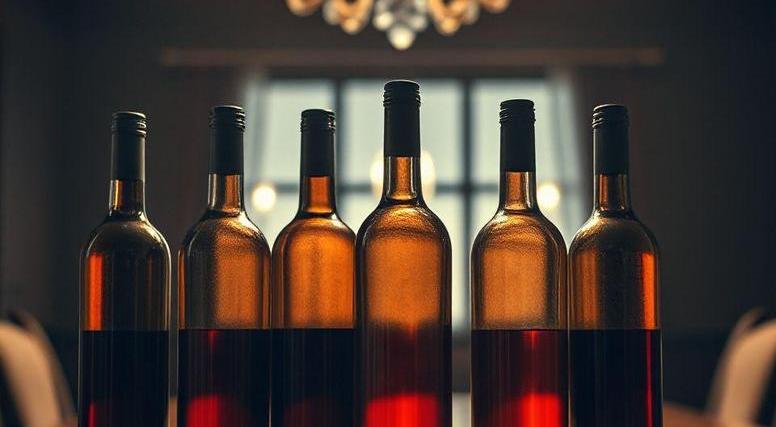- You are here:
- Home »
- Wine By Type
Category Archives for Wine By Type

Rice Wine : History, Flavors, Pairings & More
Rice wine, a staple in many Asian cuisines, offers a rich tapestry of flavors and traditions that can transform any meal into a cultural experience. From the delicate, aromatic brews of Japan’s sake to the robust, savory notes of China’s huangjiu, rice wine is more than just a beverage—it’s a reflection of history, craftsmanship, and […]
Continue reading
Moschofilero Wine : History, Flavors, Pairings & More
Moschofilero, a captivating white wine from Greece, has been steadily garnering attention for its unique flavor profile and versatile nature. Hailing primarily from the high-altitude vineyards of the Mantinia region in the Peloponnese, this aromatic varietal stands out with its distinct floral and citrus notes, often reminiscent of rose petals, grapefruit, and hints of spice. […]
Continue reading
Honey Wine : History, Flavors, Pairings & More
Honey wine, also known as mead, is one of the oldest and most intriguing beverages in human history, with roots tracing back thousands of years across diverse cultures. Made from fermented honey, water, and often various fruits, spices, or herbs, mead offers a unique and versatile flavor profile that distinguishes it from other alcoholic beverages. […]
Continue reading
Dolcetto Wine : History, Flavors, Pairings & More
Dolcetto wine, a cherished gem of Italy’s Piedmont region, offers a delightful exploration for both novice and seasoned wine enthusiasts. Known for its vibrant fruitiness and approachable charm, Dolcetto often surprises with its depth and versatility. With a history dating back centuries, this red wine embodies the rich traditions and diverse terroirs of its homeland. […]
Continue reading
Mavrodaphne Wine : History, Flavors, Pairings & More
Mavrodaphne wine, a gem of Greek viticulture, offers a rich tapestry of flavors and history that delights wine enthusiasts and connoisseurs alike. Originating from the sun-drenched vineyards of the Peloponnese, this unique varietal is crafted from the Mavrodaphne grape, renowned for its deep, complex profile and distinctive sweetness. With roots tracing back to ancient Greece, […]
Continue reading
Lemon Wine : History, Flavors, Pairings & More
Welcome to the ultimate guide on lemon wine, where citrus meets sophistication in a glass. This refreshing and zesty beverage has been captivating wine enthusiasts with its unique blend of tartness and smoothness, offering a delightful alternative to traditional wines. Lemon wine, often celebrated for its bright and invigorating flavor profile, is crafted through the […]
Continue reading
Rhubarb Wine : History, Flavors, Pairings & More
Rhubarb wine, a unique and delightful beverage, offers a refreshing departure from traditional fruit wines, combining the tart, tangy essence of rhubarb with the complexity of fermented flavors. This guide will navigate enthusiasts through the intriguing process of making rhubarb wine, from selecting the perfect stalks to achieving the ideal balance of sweetness and acidity. […]
Continue reading
Chardonnay Wine : History, Flavors, Pairings & More
Chardonnay, often hailed as one of the most versatile and popular white wines in the world, has captivated wine enthusiasts with its rich flavors and wide-ranging styles. From the sun-soaked vineyards of California to the cool, crisp regions of Burgundy, Chardonnay offers a spectrum of taste experiences that reflect the unique terroirs and winemaking techniques […]
Continue reading
White Blend Wine : History, Flavors, Pairings & More
White blend wines offer a fascinating exploration into the world of wine, combining the characteristics of multiple grape varieties to create unique and complex flavor profiles. Unlike single-varietal wines, which focus on the nuances of a single grape type, white blends draw on the strengths and qualities of different varietals to achieve a harmonious and […]
Continue reading
Scuppernong Wine : History, Flavors, Pairings & More
Scuppernong wine, a unique and storied beverage, has captivated connoisseurs with its distinctive flavor profile and rich history. Named after the Scuppernong grape, a variety of muscadine native to the southeastern United States, this wine offers a taste of regional tradition and natural elegance. Known for its golden hue and aromatic complexity, Scuppernong wine reflects […]
Continue reading